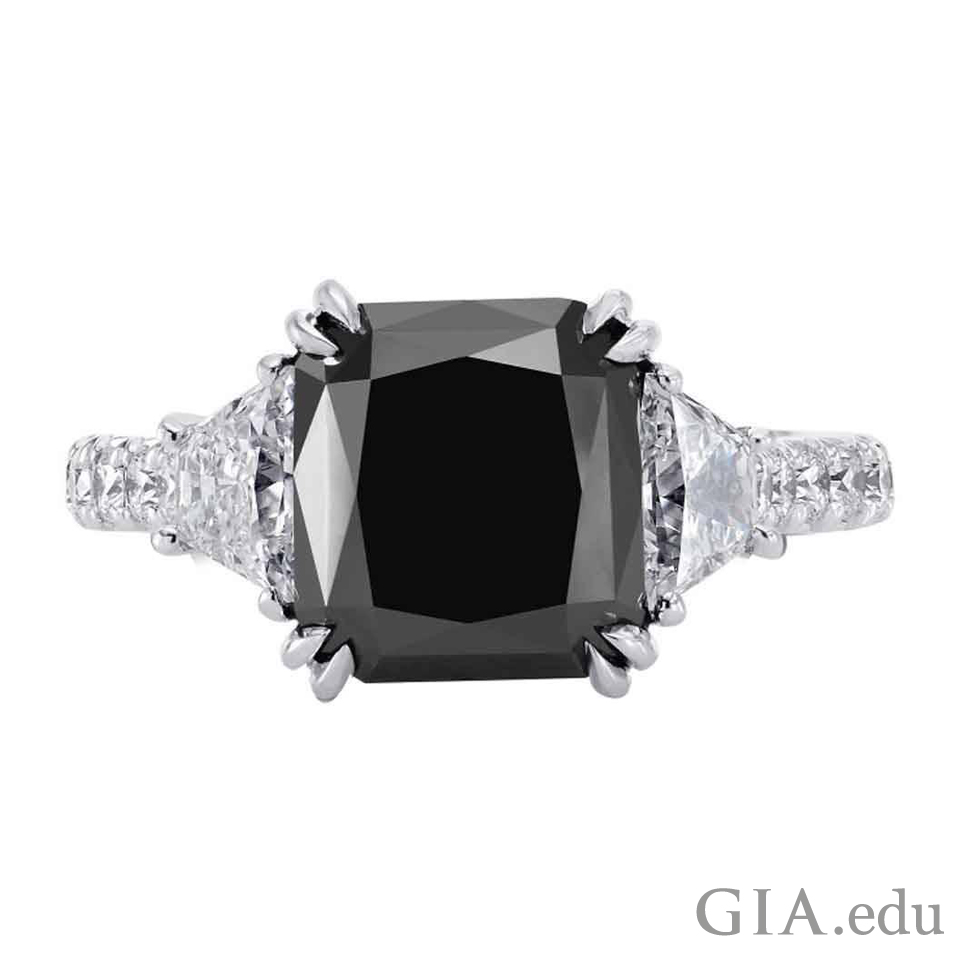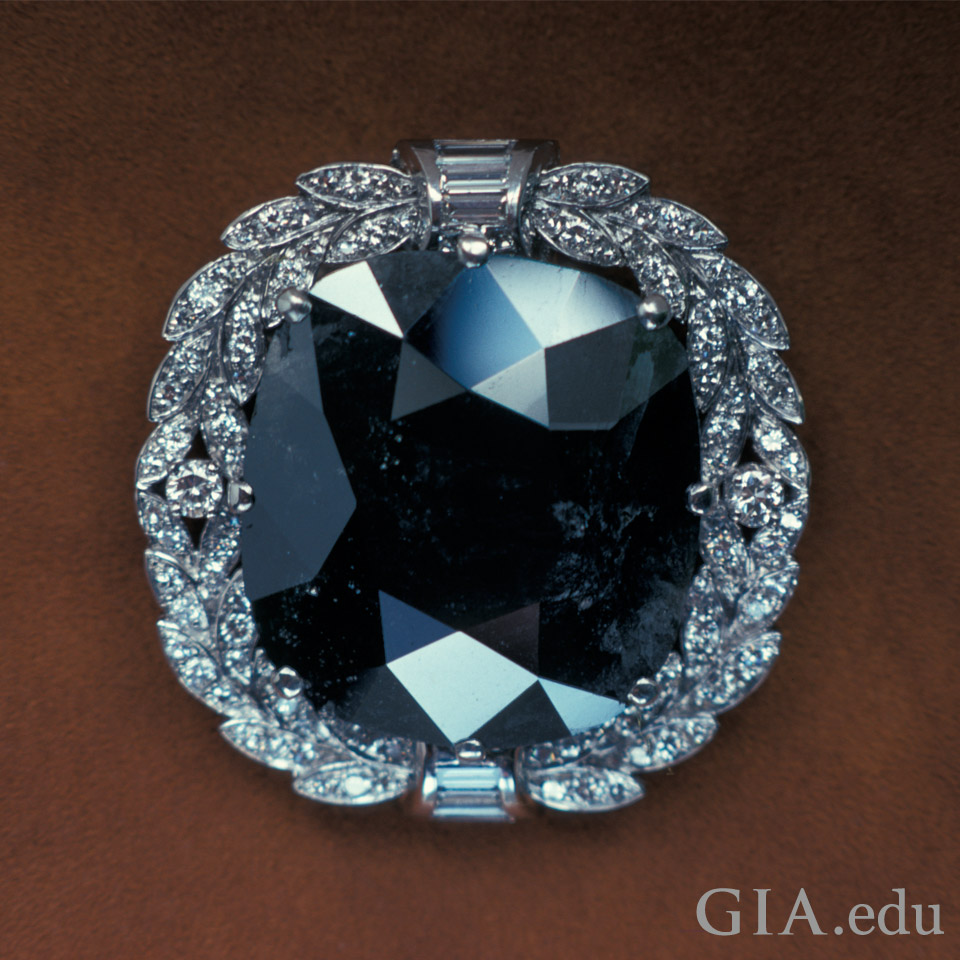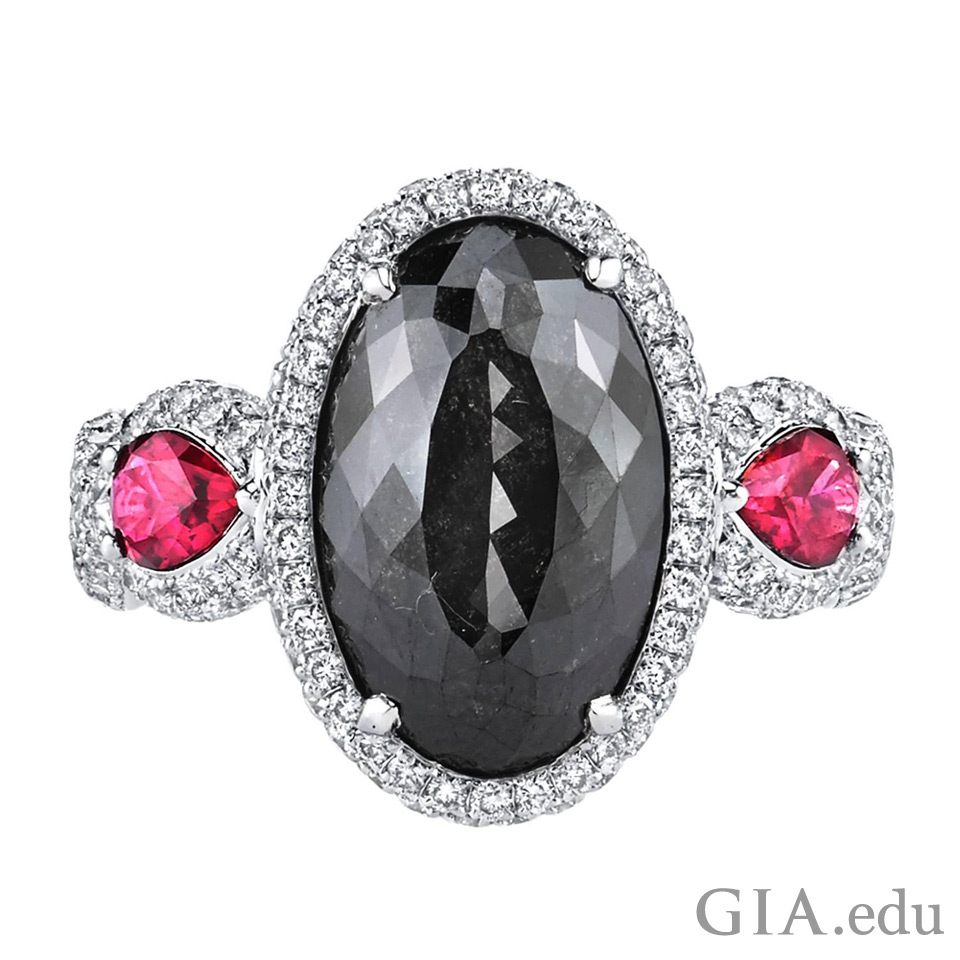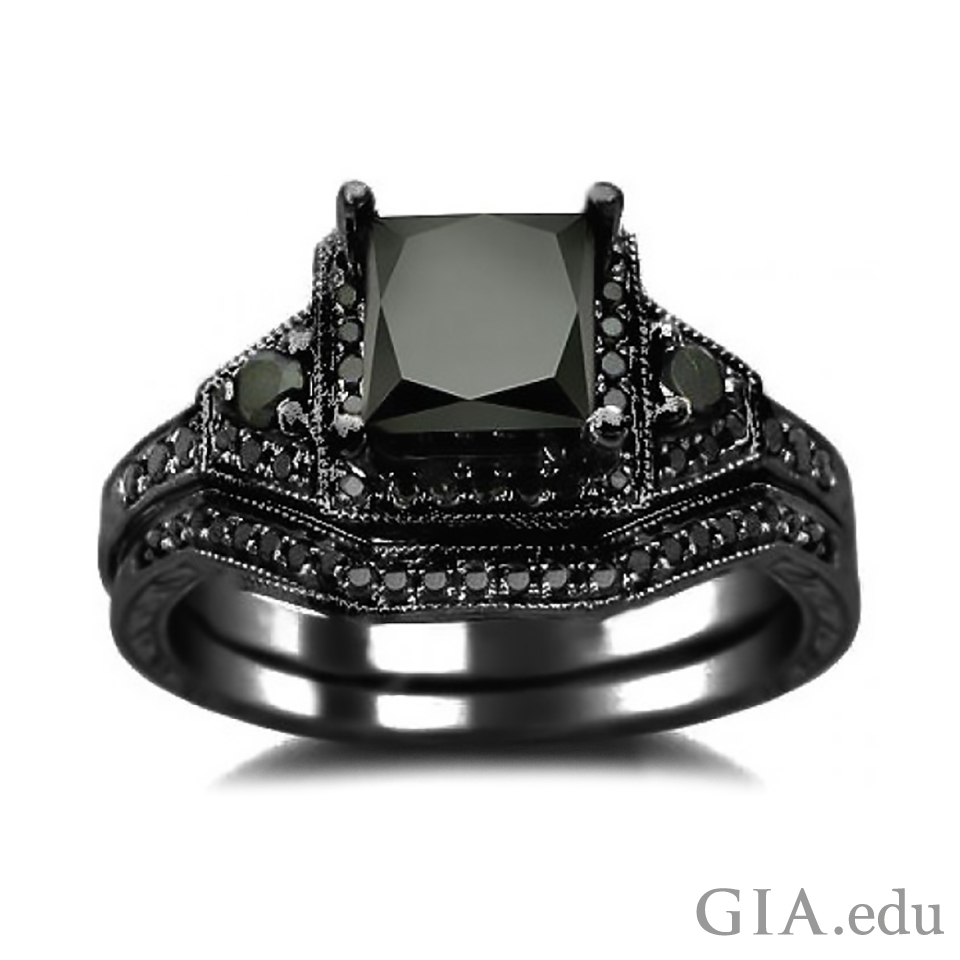From cast-asides to starring roles, black diamonds have taken quite a journey. They’re even vying for position as center stones in engagement rings! But it pays to look beyond their unique appearance to learn more about this enigmatic gem.

A 5.33 carat (ct) black diamond makes for a breathtaking center stone. A platinum setting with 1.01 carats of colorless diamonds on the shank creates a stunning contrast. Courtesy: 1stdibs.com
A Brief History of Black Diamonds
Now prized as “Fancy blacks,” natural-color black diamonds were historically held in low regard. Author J. R. Sutton wrote in his 1928 book Diamond: A Descriptive Treatise: “Ordinary black diamond is not greatly unlike black sealing wax. Opinions differ as to its virtues as a gemstone.” Only a few famous black diamonds are known, such as the 67.50 ct Black Orloff – also called the Eye of Brahman – which was reputed to be stolen from an idol in India in the early 1800s. So cursed that several of its owners committed suicide, it was ultimately recut to break the hex.

Set in a halo of colorless diamonds, the 67.50 ct Black Orloff doesn’t look jinxed. Rather, it is an object of rare beauty.
Consumers had little interest in black diamonds until the late 20th century, when designers started using them in jewelry, especially contrasting them with tiny colorless diamonds in pavé settings.
Black diamond engagement rings may have come of age when Mr. Big gave Carrie a 5 ct black diamond engagment ring at the end of the 2010 movie Sex in the City 2. They got more press when Carmen Electra and tattoo artist Kat Von D flaunted their black diamond engagement rings a couple of years later. Interest has continued to grow.

A 6.21 ct black diamond commands attention in this dramatic ring. The two rubies and colorless diamond accent stones create vivid color contrasts. Courtesy: 1stdibs.com
How Black Diamonds Get their Color
Research into the cause of color in black diamonds is relatively recent. Today we know that most naturally colored black diamonds get their color from large quantities or clouds of minute mineral inclusions such as graphite, pyrite or hematite that extend throughout the stone. These diamonds may also have numerous cleavages or fractures that are stained black or have become black because of graphitization. It is the concentrations of these internal features that are responsible for the coloration. In fact, the actual body color of a natural black diamond may range from near-colorless to brown or “olive” green.
Natural-color black diamonds typically are completely opaque, with a high luster that gives the stones an almost metallic appearance. And because these diamonds are so heavily included, cutting and polishing them can be difficult. They also must be set with great care.
However, a fine natural-color black diamond is a beautiful stone, with a distinctive look unlike other diamonds in the marketplace. They are often more affordable than other diamonds, too.
Most of the black diamonds sold for jewelry and engagement rings have been treated to induce the color. Many begin as gray, heavily included and fractured diamonds that are subjected to high-temperature/low-pressure treatment, which graphitizes the fractures, turning them black. Artificial irradiation of off-color diamonds can also produce a green so dark the diamond appears black.

A 2.01 ct princess cut black diamond set in 14K blackened gold with black diamond side stones is the definition of a statement engagement ring. Note the matching wedding band. Courtesy: Front Jewelers, www.frontjewelers.net
How Are Black Diamonds Graded?
The 4Cs – color, clarity, cut and carat weight – together with GIA’s International Diamond Grading SystemTM are the standards by which colorless to near-colorless (D-to-Z color diamonds) are graded. Black diamonds fall outside this color range, so their color is evaluated based on GIA’s color grading system for colored diamonds.
What’s more, because black diamonds are opaque – and, in most cases, heavily included – they cannot be graded on the GIA clarity scale. Likewise, because there is no variation in the tone and saturation of a black diamond (unlike their pink, yellow, or blue counterparts), only the single grade term Fancy black is used. Consequently, GIA does not issue grading reports for these diamonds. Instead, GIA issues a Colored Diamond Identification and Origin Report. In this report, such diamonds are described as Fancy black and their color is noted as either natural or treated.

Black diamond engagement rings can have a more casual look, like this one set with a 1.35 ct rose cut, pear shaped stone. The use of 18K yellow gold softened its appearance. Photo: Cole Rodger. Courtesy: Rona Fisher Jewelry Design
Caring for Black Diamonds
A black diamond’s nature is such that it may contain hundreds if not thousands of microscopic fractures. Although diamond is prized for its superior hardness, these multiple fractures make black diamonds more vulnerable to breakage from sharp blows than colorless diamonds.
The care and cleaning of black diamonds is the same as for any delicate gemstone: do not use steam or ultrasonic cleaners, which could cause damage.
Black diamonds have a unique and dramatic beauty. Perhaps they’re best for a couple with that kind of relationship – and maybe that describes you and your future spouse.
If you’re attracted to black diamonds, you may also be captivated by another enigmatic colored diamond: the Fancy white diamond.




